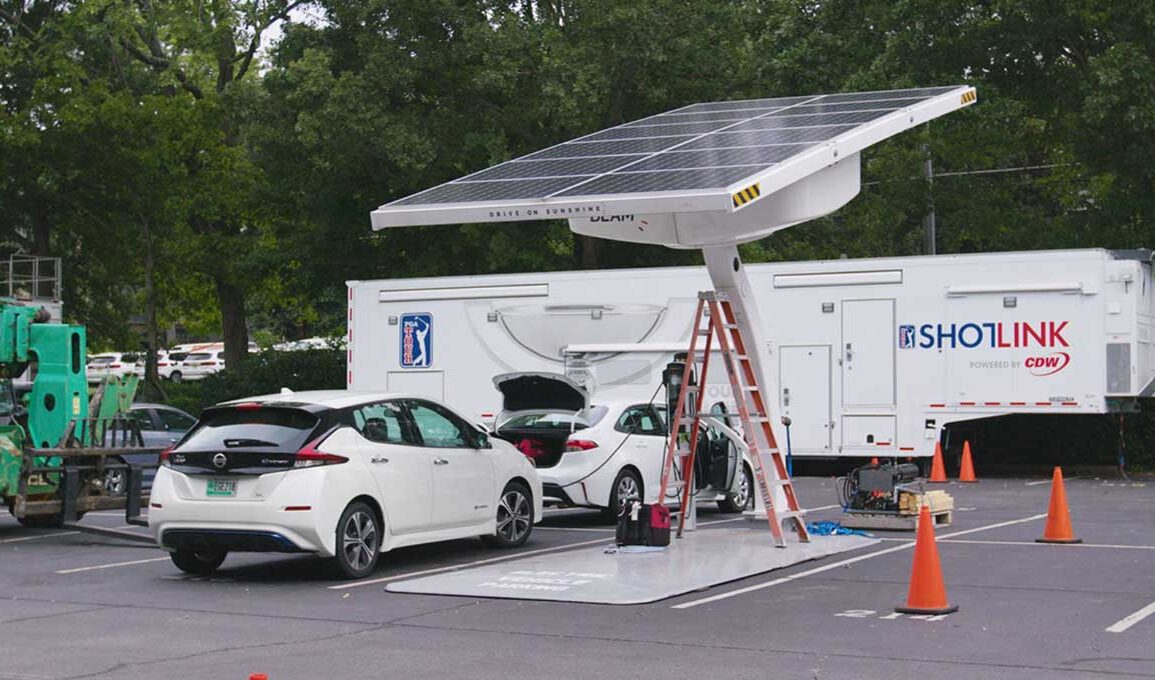The PGA TOUR has been using ShotLink powered by CDW to collect, store, and record data on every shot made on the tour for more than 20 years. Since 2001, ShotLink has recorded over 28 million shots, and the information about each shot is often shared in a matter of seconds with partners, fans, and the media.
Large amounts of labour are required to power and maintain the infrastructure required for such a network. During its former version, the PGA TOUR usually required the installation of 20–30 miles of composite fiber-optic and power cables in order to supply the necessary power and paths for the collection and delivery of this data.
The quantity of data being gathered is 10 times more with the launch of the redesigned ShotLink soon. With more data available, the narrative surrounding golf analytics will be more compelling.
However, more infrastructure is needed to handle the growing volume of data. The quantity of fiber-optic cables, generators, and propane tanks required to run and maintain this system would, to be honest, overwhelm a golf course.
To address this issue, the PGA TOUR came up with a plan that takes advantage of golf’s outdoor nature. ShotLink uses a hybrid power system powered by solar energy that uses significantly less fibre and doesn’t affect the playing grounds used by the PGA TOUR.
“We’re resolving real-world issues. We can reduce the amount of fibre we need to run by placing an outpost on one side of the fairway that is not physically dependent on any other power source. All is sunlight. It is constantly charged by the batteries, which also provide redundancy and backup. Through this, we’re resolving technical and business issues with a truly tasteful green solution. We built it because there was nothing on the market that could do this to the extent that we needed it.” stated Ken Lovell, PGA TOUR Senior Vice President, Golf Technology.
6 tripod poles with various sensors are erected by the PGA TOUR on a single par-4 course in order to record ShotLink data and video: 3 around the green, 1 on the tee box, and 1 on either side of the fairway. A tripod holding these sensors has a battery underneath it. With this innovative solar system, the TOUR can power every device and collect, transfer, and backup all of this data without having to run wires to and from each tripod. The amount of cables and generators required to power this system is reduced when solar electricity is used.
These devices can be remotely monitored and controlled by the PGA TOUR, who can also keep an eye on possible tampering, battery temperature, cell health, and life remaining in the battery. The ShotLink tripods to which the cameras and radars are fixed are covered in a three-sided solar skirt.
In perfect circumstances, the system’s solar components provide uninterrupted electricity throughout a competition. However, the ShotLink outposts are made to be easily charged by a local generator, which takes about three hours, or by using a donor power module to replenish the connected battery, which goes from almost empty to full in about two hours. This way, they are prepared for any weather, shade, or solar eclipses. The outposts themselves are designed to function completely off of an external power source for up to two days.
According to Jonathan Rabhan, Senior Product Manager for PGA TOUR ShotLink, “There was nothing available that could be bought with infrastructure monitoring or that was made to power network equipment. Thus, we concluded that a custom solution needed to be built. The ShotLink hybrid power system will lessen the number of golf carts required to support a typical generator-powered infrastructure, as well as the noise produced by generators.”
Starting this week at the RSM Classic at Sea Island Golf Club in St. Simons Island, Georgia, that solution will be on exhibit.
“We weren’t searching for a greener way to do this. This was us trying to find a power solution that worked. Its greenness is advantageous to our business practises. The fact that it was the most elegant solution we could come up with to address the issue is truly a credit to the inventiveness and originality of our design team, who are always striving for new ideas.” said Lovell.



